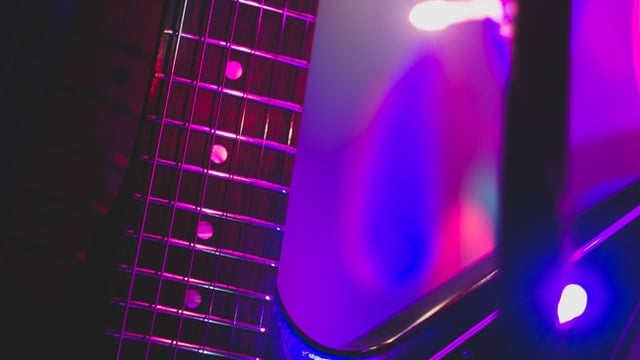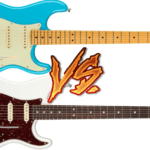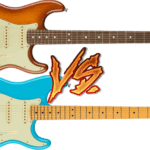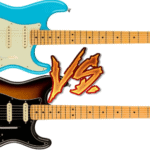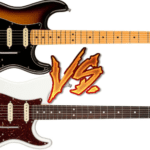So you’re right in the middle of learning a new song and you’re at the solo section when the solo calls for a full bend on the 24th fret…
Your guitar only has 22 frets on its neck. Pretty frustrating, but can you fix this problem with just a bit of tinkering and part replacement?
We’ll take a look at the differences in guitar neck lengths and whether replacing your guitar neck with a longer one is worth it.
Can you put a 24 fret neck on a 22 fret body?
The short answer is it depends.
I know, sorry.
You can put any neck on any guitar body, as long as it fits the pocket. However, even then, you might face scale length issues because the bridge and pickups might need to be moved. Most 24-fret guitars have a longer neck length than 22-fret guitars, even if the overall scale length is similar.
Here’s how to change your guitar’s neck:
Main differences between 24 and 22 fret necks
Although every guitar model is constructed different, here are some common differences most 24 and 22 fret guitars share:
- The pickup position varies. On a 22 fret guitar, the neck pickup is underneath the second major harmonic. On a 24 fret guitar, the pickup sits closer to the bridge.
- The scale length will sometimes vary between necks.
- The added frets affect the width of all the other frets.
- The tone is affected. 22 fret guitars sound warmer and thicker because the neck pickup is placed closer to the nut of the guitar and the tension on the strings is lower. 24 fret guitars can sound brighter due to the increased tension needed to tune strings to standard pitch.
Will a 24 fret neck fit on a 22 fret guitar body and Vice Versa?
Regardless of whether you’re increasing or decreasing the number of frets on your guitar, the main thing to check is that your 12th fret falls dead center between the neck and the bridge.
Both 24 and 22 fret guitar necks tend to have the same scale length (25.5”), but you should check that the 12 fret is in the center of the neck and bridge.
To do this, measure from the neck to the 12th fret, then make sure that the 12th fret is the same distance from the bridge as it is from the neck. There is a wiggle room here of a couple hundredths of an inch, the adjustment can be very minute, so take your time getting it right if you do.
Is this a reasonable mod?
Unless you’re dead set on only playing metal, probably not.
Besides, what’s wrong with buying a second guitar and having both options, am I right?
The fact of the matter is, that it might not be worth it.
With the possibility of necks not matching the body and the effect that a differing neck length will have on your guitar’s sound, the extra two frets likely aren’t worth the struggle.
Would you need to do any work to make it fit?
Aside from rerouting the neck pocket to make sure the 12th fret is in the same place, you will also need to check the pocket depth for the heel of the neck.
Most neck pockets are made 5/8” or 0.625” deep, except for fender guitars, they can vary from model to model.
This is important because switching necks means that you might have to check your new neck’s depth is the same as the old one.
If it’s too high, it can cause warping over time and if it’s too low, you won’t be able to fit a pickguard under the 24 fret overhang, or worse, your neck might be flush with the body!
Another thing to consider is the shape of the heel. Some are rounded and some are square, so check that the heel of the neck you want matches your guitar’s socket shape.
Finally, and as I mentioned earlier, 24 fret necks are longer, which can cause scale length issues if the bridge and pickup positions of the instrument are not easily moveable if needed.
Is this kind of neck swap reversible?
Generally, it seems reversible. The main thing is whether you’re making modifications to your guitar’s neck pocket.
If you’re filing into it to move a longer neck further into the body, you might have issues.
In my opinion, the best thing to do is to try to keep your guitar body’s pocket unchanged. If you need to raise the neck higher, you can get a pocket shim which could be removed later.
You should also make sure that your new neck has as close to the same scale length as possible so you don’t have too many adjustments to your guitar’s heel or pocket.
Where can you find aftermarket guitar necks?
Regardless of your decision, you can find tons of resources for guitar necks.
Here are a few top recommended sites:
Final remarks and a heads up
The following information was sent to us by Bruce Bennet, master luthier, and one of our readers, and I think it is very important to know if you are thinking about a neck swap:
I think the biggest problem that has not yet surfaced in the guitar-playing public mind, is that with regards to neck swapping.. several factories have taken a rather unique and stealthy new approach to how they build guitars.
A few years ago Fender, who also controls/owns Charvel/Jackson, Gretsch, EVH, and Squier, put their engineers to work solving a perceived “problem” which was to redesign all of these products so that none of the necks could be swapped out to the others bodies.
Apparently, they want to make it harder to create “fake” products using cheaper parts and higher quality necks with the proper logos and serial numbers as this was a serious issue only 10-15 years ago and eBay was flooded with Squiers with Fender necks on them or worse.
When The DIY community figured out this was a simple way to make a few hundred extra on a Fender neck with a homemade body swap and sell it as a “Signature version Custom Shop Fender”
Now, none of those necks will swap out.
Even if they are the same scale.
Also several of the aftermarket necks will no longer fit the “off brands” other than Fenders as easily, as they are made to fit the vintage Fender styles but bear in mind this is not a hard and fast rule.
Some units will fit depending on the model…
So the best I can tell you is to Measure twice, and cut once… and not just the scale length, but the nut to end of the neck they must match the neck being replaced.
Also, the neck back and fretboard can be treated as separate parts during the build, and can be “slid” slightly forward or backward on the back portion of the neck to make the scale not work properly.
It appears that Fender has “offset the neck back” (the maple part) and fretboards by 1/4” on every one of their different brands now, either in the neck/fretboard or at the body pockets.
It’s been a very upsetting situation for the DIY community.
They changed the game on us without any warning.
Bruce Bennett

Hello there, my name is Ramiro and I’ve been playing guitar for almost 20 years. I’m obsessed with everything gear-related and I thought it might be worth sharing it. From guitars, pedals, amps, and synths to studio gear and production tips, I hope you find what I post here useful, and I’ll try my best to keep it entertaining also.

